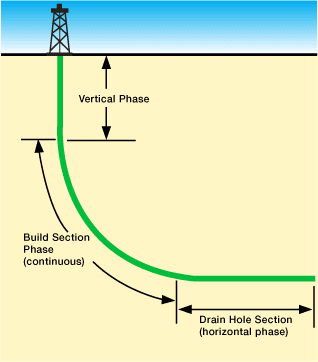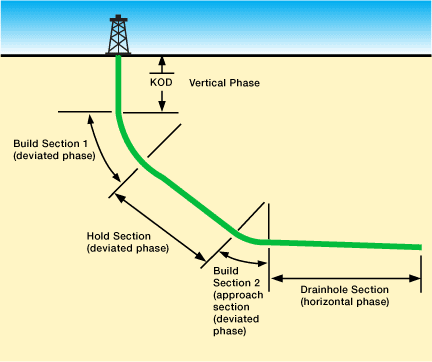Trajectory Planning
The starting point in planning a horizontal well trajectory is to specify the entry depth into the reservoir and the minimum drainhole length or total depth inside the reservoir. Reaching the target involves three phases:
- Vertically drilling to the kick-off point.
- Directionally drilling to the objective zone.
- Laterally drilling within the objective zone.
By the time a well reaches kick-off depth, plans have already been made to either continuously build angle until reaching the entry depth, and then hold angle through the target zone (Figure 1, Continuous build tangent section), or build-and-hold in two phases until the lateral section reaches the minimum drainhole length or total depth (Figure 2, Two-build tangent section).


In other words, the directional portion of the well may contain either one or two build sections.
The trajectory we choose for a given well is based on minimizing problems related to hole cleaning, torque and drag, and wellbore instability. We also have to look to the future with respect to the expense involved in well completion and intervention. The two most common problems that occur while drilling build sections are inability to build hole angle and inability to correct azimuth. These problems typically result from troublesome formations and improper bottomhole assembly design.
 Petro Shine The Place for Oil and Gas Professionals.
Petro Shine The Place for Oil and Gas Professionals.



